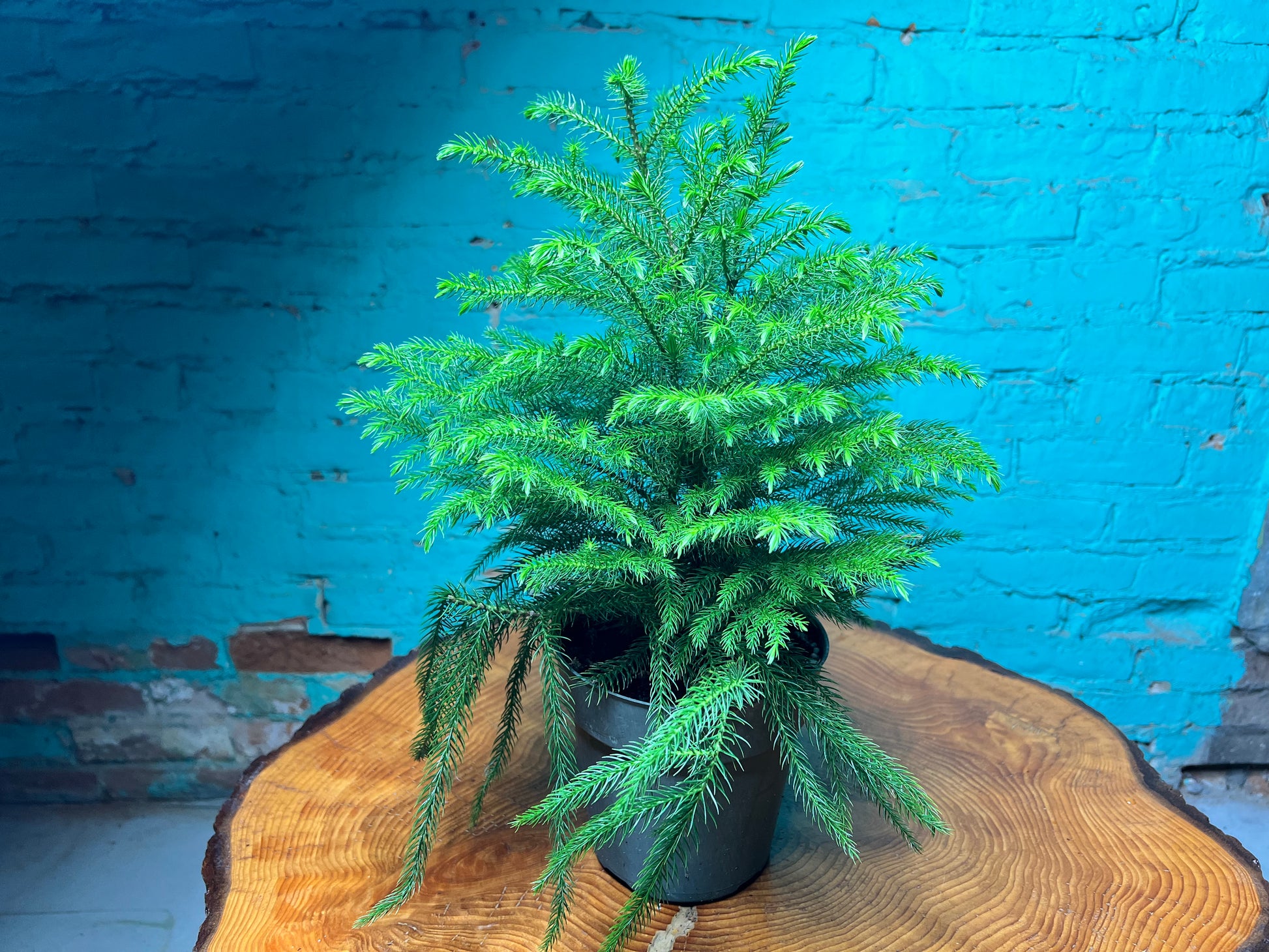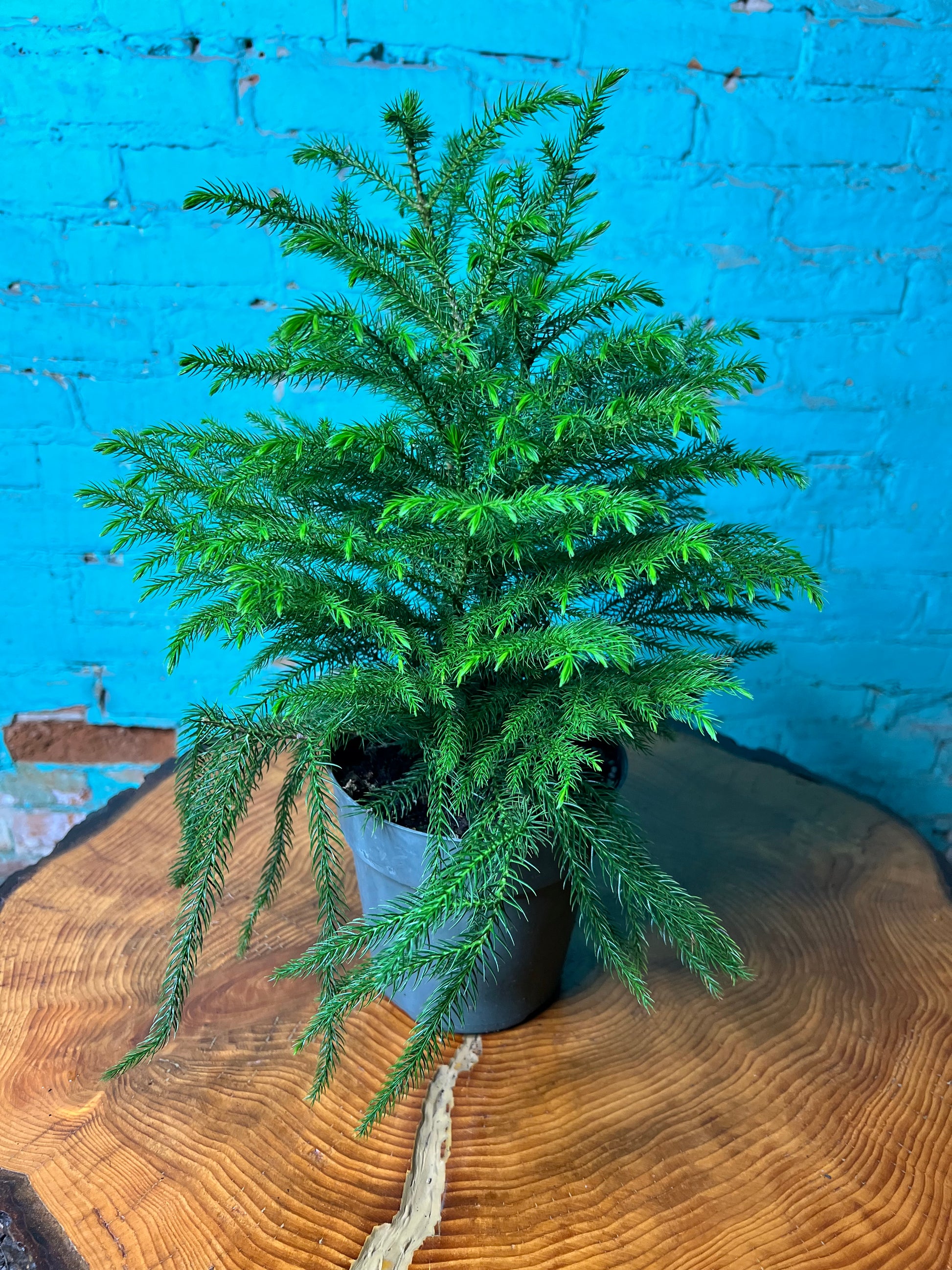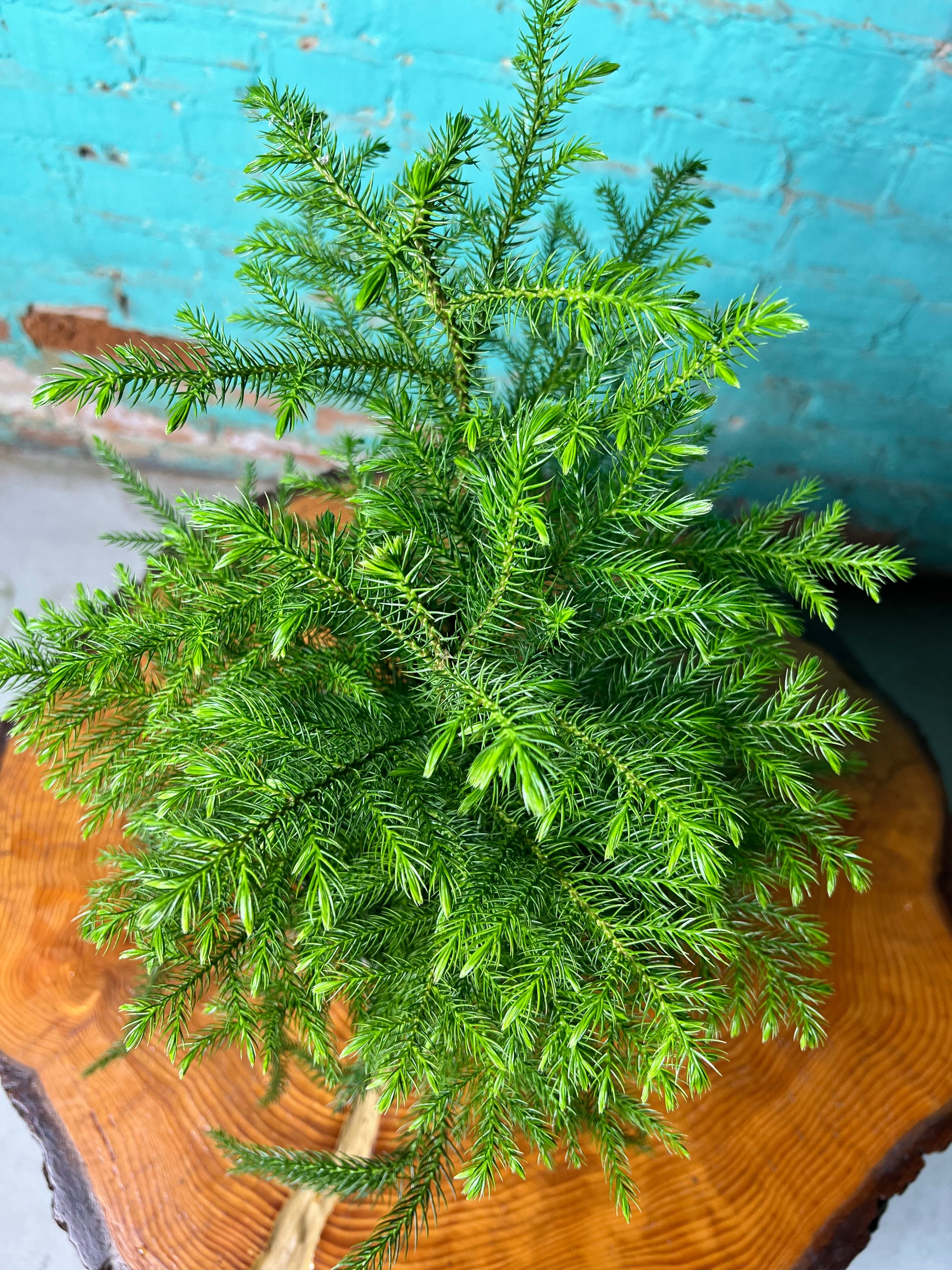The Rooted Plant Shop
Norfolk Pine 6”
Norfolk Pine 6”
Couldn't load pickup availability
Norfolk Island Pine (Araucaria heterophylla) is a stunning evergreen with symmetrical, soft branches and a lush, tropical appearance. While it’s not technically a true pine, it can make a beautiful indoor tree when given the right care. Here’s how to look after a Norfolk Pine indoors:
Light Requirements
- Bright, Indirect Light: Norfolk Pines thrive in bright, indirect light. They do well near a south- or west-facing window, but make sure they’re not exposed to direct sunlight, as this can scorch the needles.
- Avoid Low Light: Norfolk Pines will tolerate low light, but they won’t grow as well and may lose their vibrancy over time. Too little light can lead to sparse growth and yellowing needles.
- Rotate Regularly: To maintain even growth and prevent the plant from leaning toward the light source, rotate it occasionally.
Temperature
- Moderate, Stable Temperature: Norfolk Pines prefer moderate temperatures between 60-70°F (15-21°C) but can tolerate slightly higher temperatures, up to 75°F (24°C). They should be kept away from drafts, such as near open windows, air conditioners, or heaters.
- Avoid Cold: Norfolk Pines are sensitive to cold temperatures and may suffer if exposed to temperatures below 50°F (10°C).
Watering
- Consistent Moisture: Keep the soil evenly moist, but not soggy. Water the plant when the top 1–2 inches of soil feel dry to the touch. Overwatering or letting the plant sit in water can lead to root rot.
- Avoid Standing Water: Ensure the pot has drainage holes, and empty any water that collects in the saucer beneath the pot. Standing water can cause the roots to rot.
- Use Room Temperature Water: Use water that’s at room temperature to avoid shocking the roots.
Humidity
- Moderate to High Humidity: Norfolk Pines thrive in humid environments. Indoor air can be very dry, especially in winter, so consider increasing the humidity around your plant.
- Humidifier or Misting: Using a humidifier nearby or occasionally misting the foliage can help maintain the humidity level. You can also place the plant on a humidity tray, which consists of pebbles and water to increase moisture in the air around the plant.
- Avoid Drafts: Keep the plant away from areas where air is dry, such as near heating vents or air conditioners.
Soil
- Well-Draining Soil: Norfolk Pines prefer a light, well-draining soil mix. A standard potting mix works well, but adding perlite or sand can help improve drainage.
- Acidic to Neutral pH: Norfolk Pines prefer slightly acidic to neutral soil (pH 5.5 to 7). Avoid overly alkaline soil, which can cause nutrient deficiencies.
Fertilizing
- Fertilize in the Growing Season: Norfolk Pines should be fertilized every 4-6 weeks during the growing season (spring and summer). Use a balanced liquid fertilizer diluted to half strength to avoid over-fertilizing.
- Slow Growth in Fall/Winter: During the fall and winter, the plant’s growth slows down, so you can reduce or stop fertilizing entirely during this time.
Pruning
- Minimal Pruning: Norfolk Pines don’t require much pruning, and they naturally maintain a symmetrical shape. However, you can remove any dead or damaged branches to keep the plant looking tidy.
- Don’t Cut the Top: Avoid cutting the top of the tree, as it could stop the plant from growing taller. Norfolk Pines grow slowly, and removing the top could also stunt new growth.
Pests
- Watch for Pests: While Norfolk Pines are relatively pest-resistant, they can still attract pests like scale, aphids, or spider mites, especially in dry indoor environments.
- Treatment: If you notice pests, gently wipe the foliage with a damp cloth or use insecticidal soap or neem oil. Be sure to follow the directions on the label.
Repotting
- Repot Every Few Years: Norfolk Pines grow slowly and don’t need to be repotted often. However, if your tree outgrows its pot or the soil becomes compacted, it’s time to repot. Typically, repotting every 2-3 years is sufficient.
- Choose a Pot with Drainage: Make sure the new pot has good drainage to avoid water retention around the roots.
Common Issues
- Yellowing or Dropping Needles: This can be caused by improper watering (either too much or too little), low light, or temperature stress. Ensure the plant is in a spot with adequate light and temperature, and avoid letting it sit in excess water.
- Brown Tips: If the tips of the needles turn brown, it may be a sign of low humidity, underwatering, or exposure to drafts. Increase the humidity and make sure the soil is evenly moist.
- Slow Growth: Norfolk Pines are slow growers, so be patient. If your tree isn’t growing quickly, it may just be its natural growth rate. Ensure it's getting the proper care in terms of light, humidity, and water.
Indoor Placement
- Good for Larger Spaces: Norfolk Pines can grow tall, so they work best in larger indoor spaces where they can spread out. Keep in mind that they can reach heights of 6–8 feet (or more) in indoor environments over time.
With the right conditions, a Norfolk Pine can thrive indoors, adding a tropical, evergreen touch to your home. Just remember to provide plenty of light, stable temperatures, and a moderate amount of water and humidity. It's a beautiful plant that will reward you with its graceful, tree-like appearance for many years.
Share
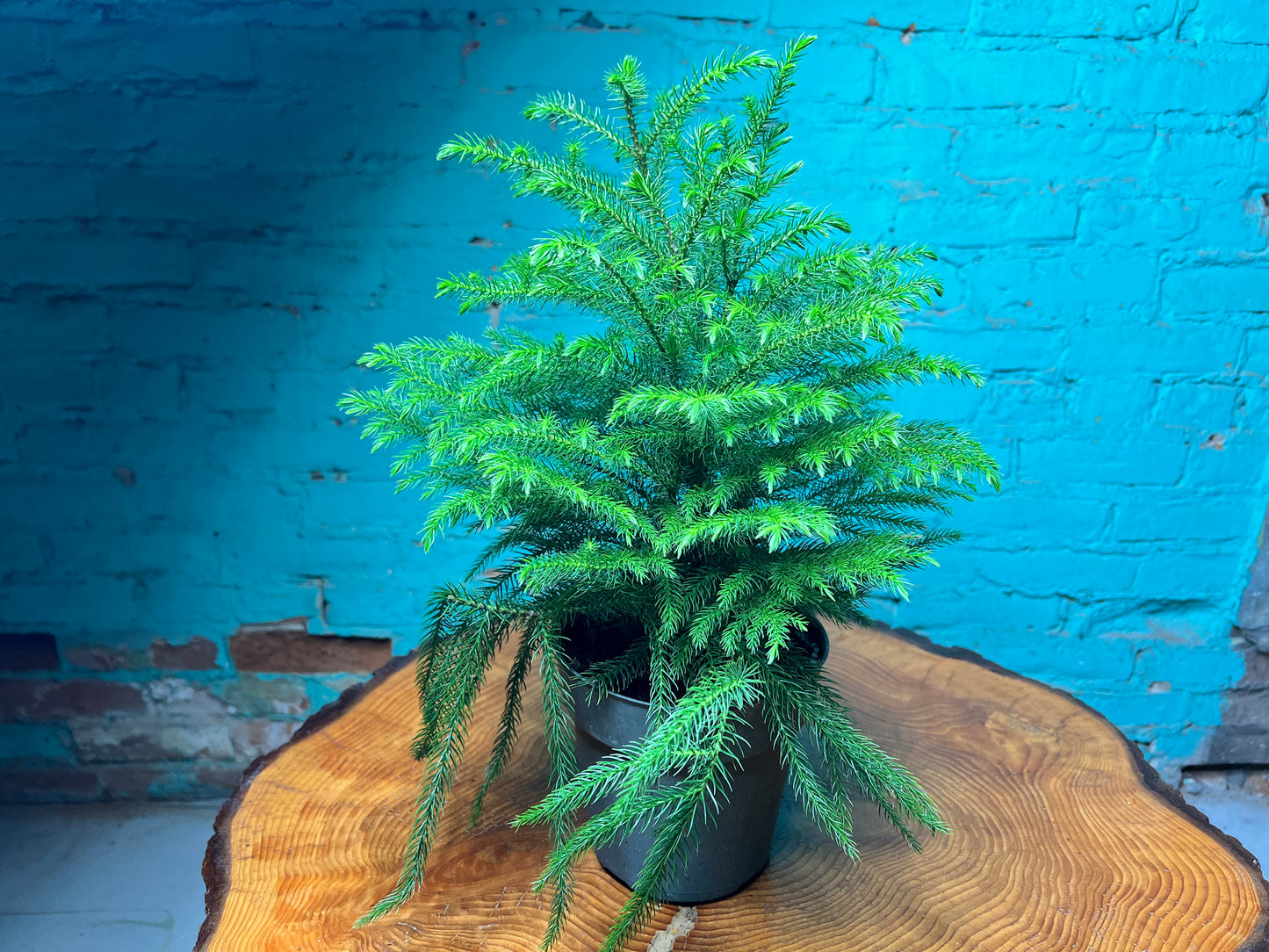
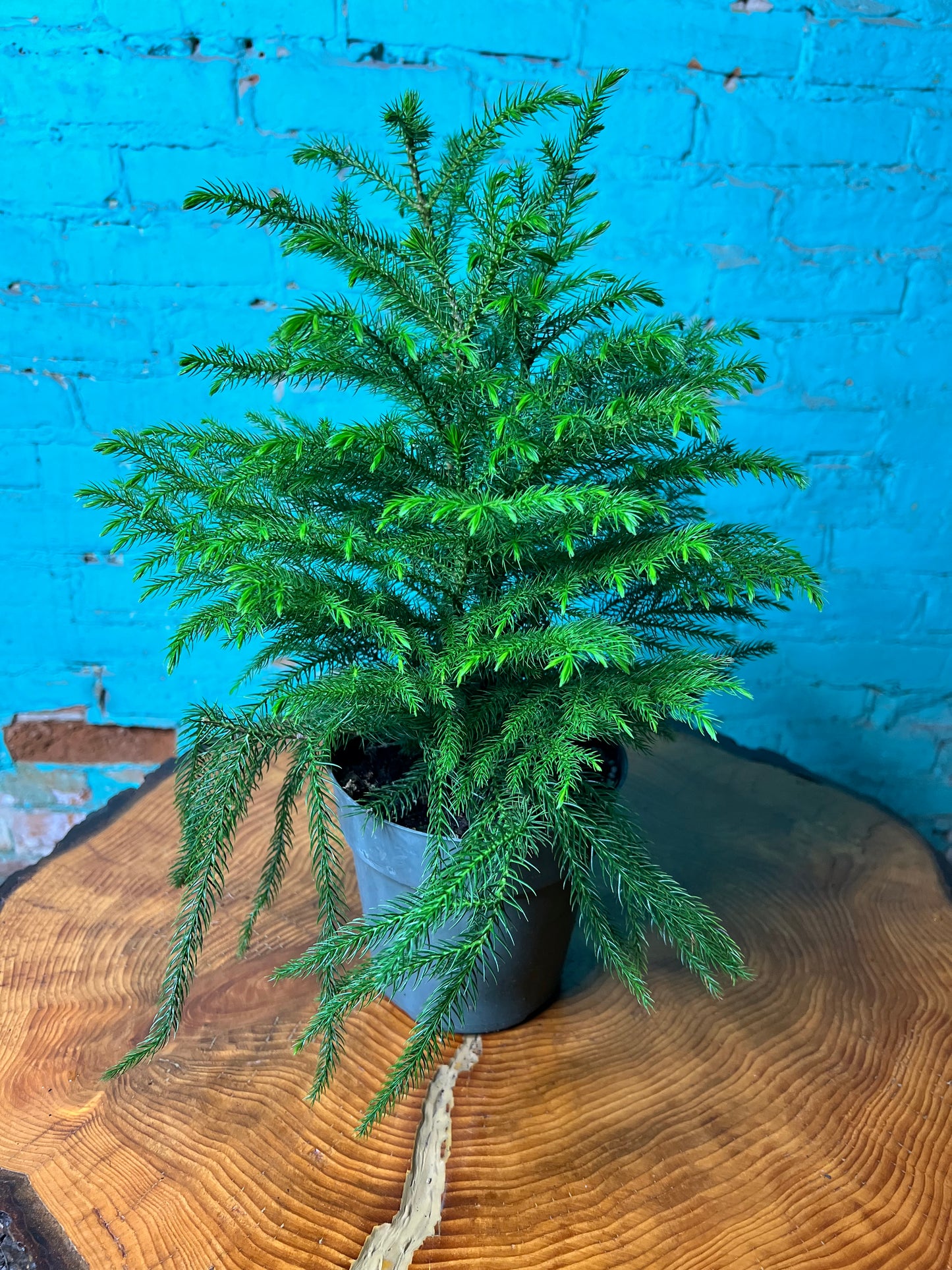

Let customers speak for us
from 398 reviewsI am in love with this plant!! She arrived quickly and healthy! She is thriving and doing beautifully!! The Rooted Plant shop is now my # 1 go to plant shop for all of my plant purchases!!

Plants arrived healthy and beautiful. They are thriving! I couldn’t be happier.

A great plant. The leaves are so unusual and unique. Plant was in good condition.

Plants r beautiful they were well boxes up the right way. Mell will teach u of how to take care of your plants. She is a awesome person & caring..

Everything was packed great I even got a little lady bug. 😊 thank you so much

This hooded sweatshirt is a great design. Excellent weight and quality material. The graphics are planty approved 😃

They arrived in fantastic shape no cold weather damage and very prompt

Absolutely love! So healthy, beautiful and already pushing out new leaves. Stunning 😍

Plant arrived looking even more beautiful than in the pictures! The care put into packing really shows. You wouldn't think it had just been shipped over 900 miles.


